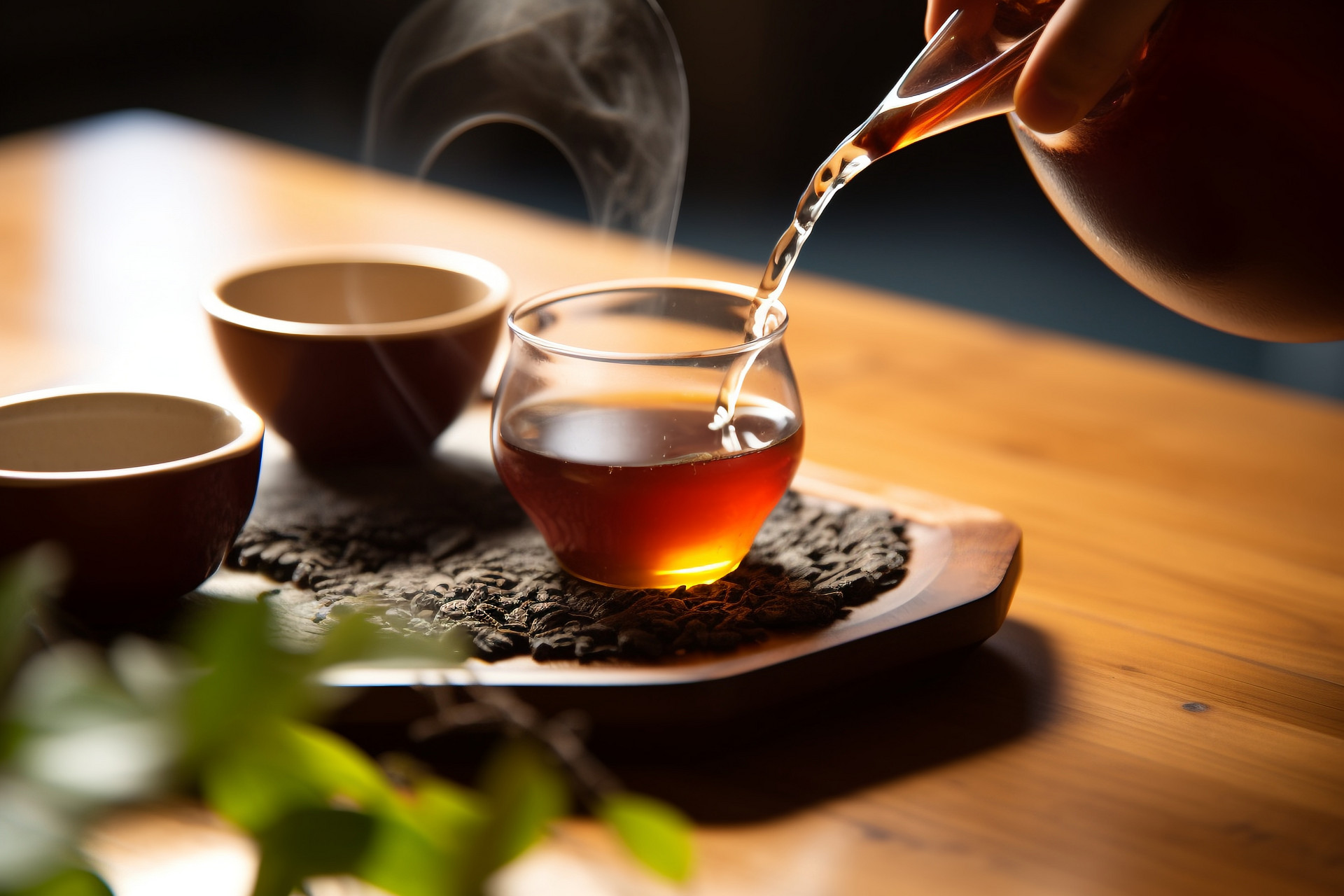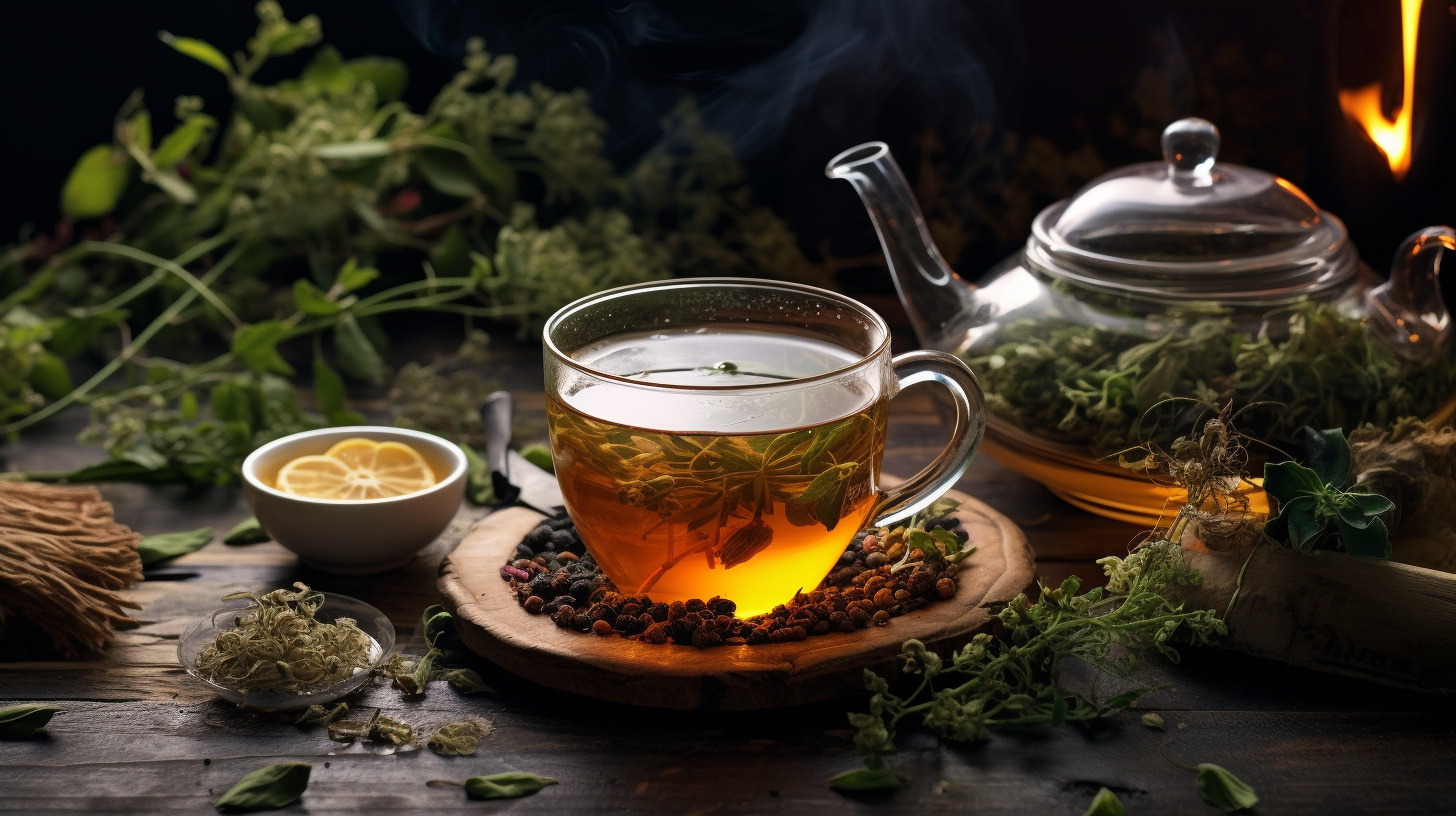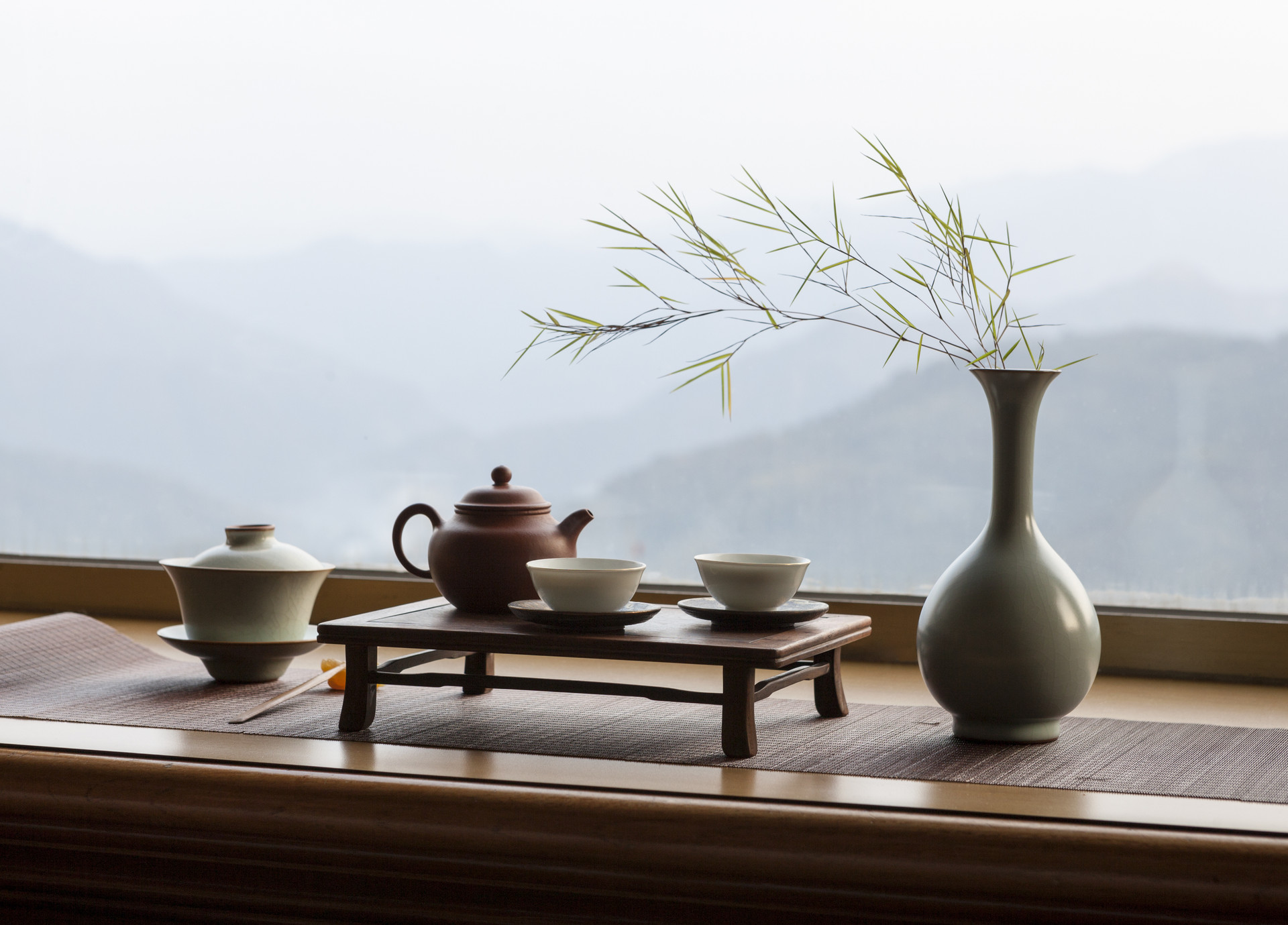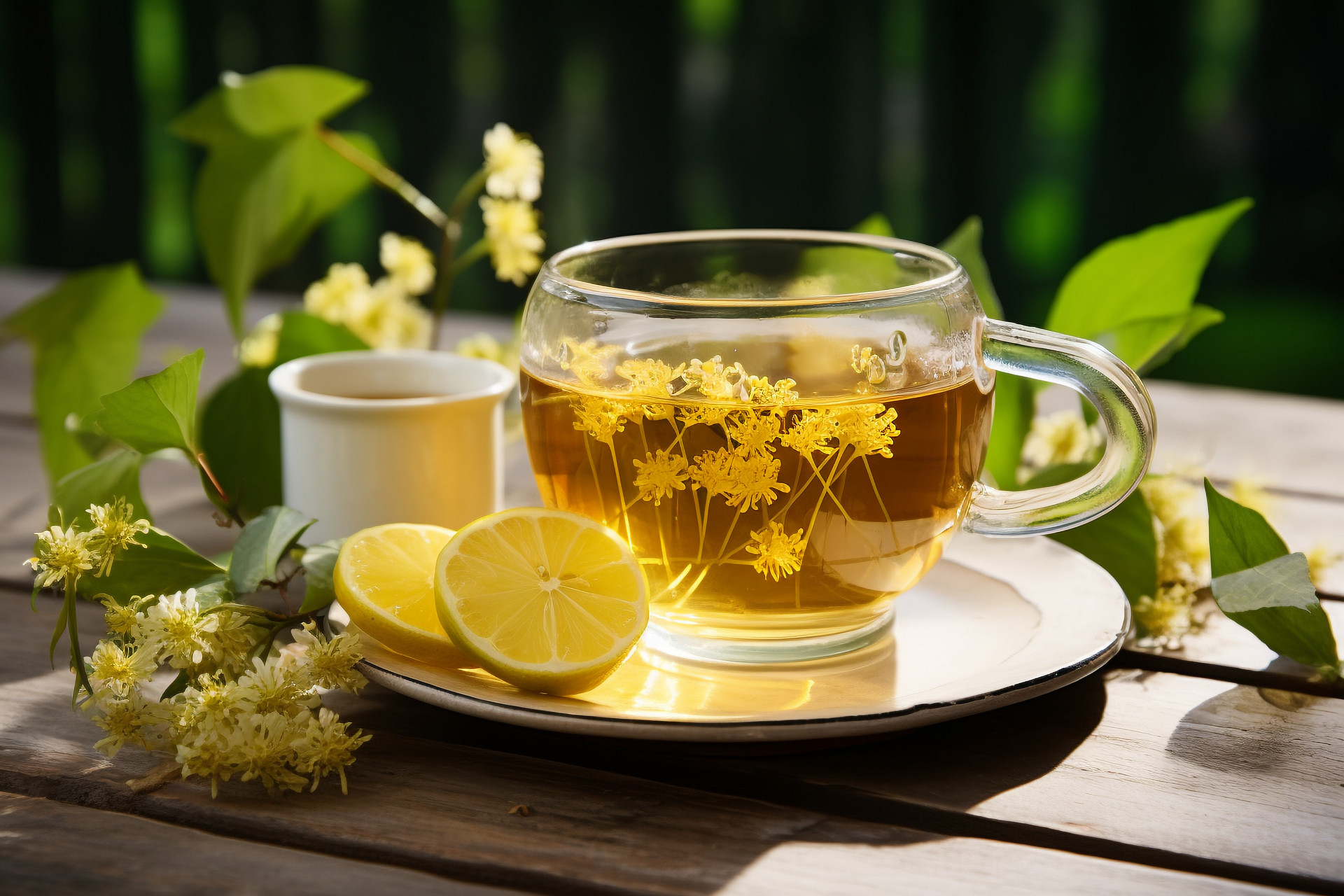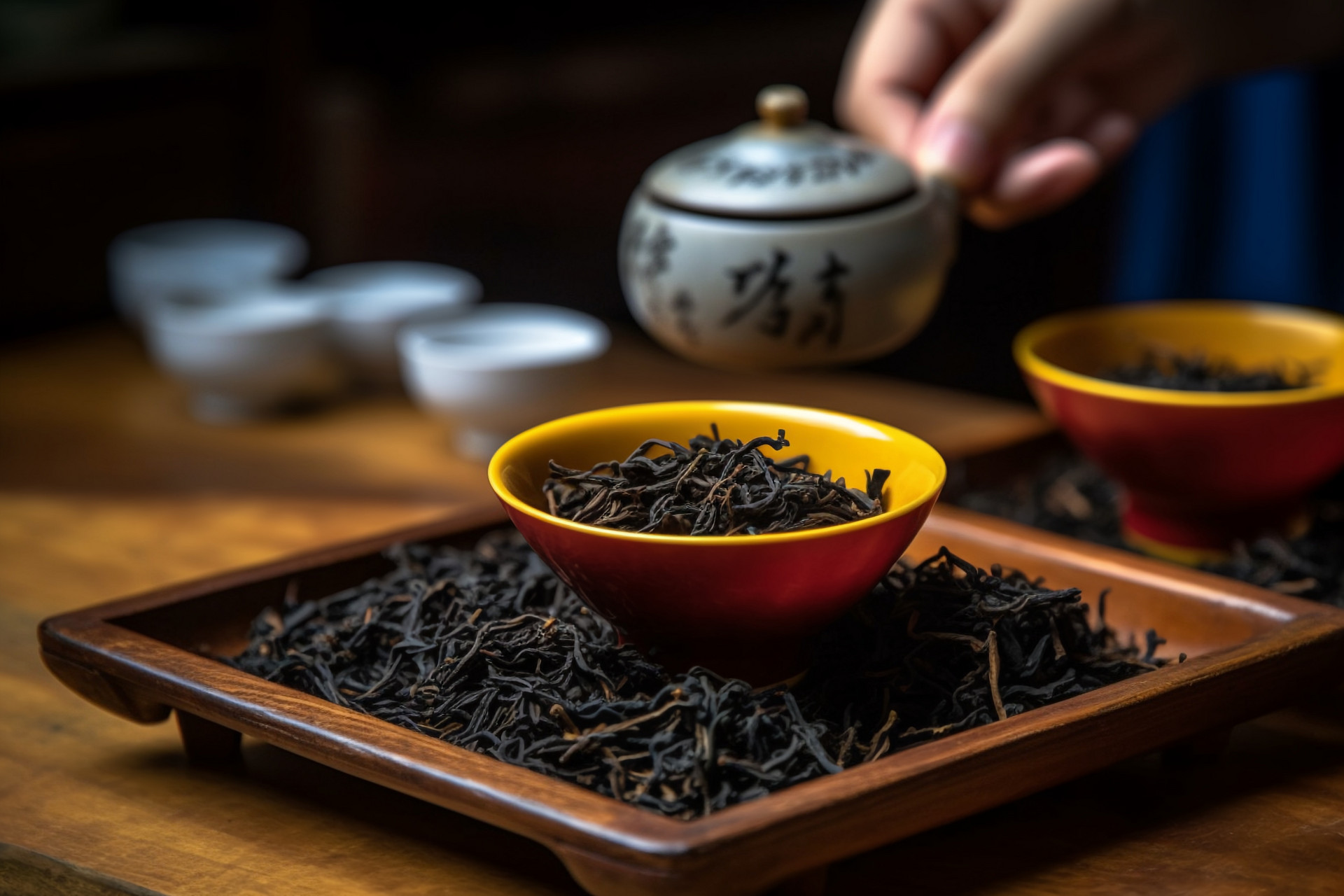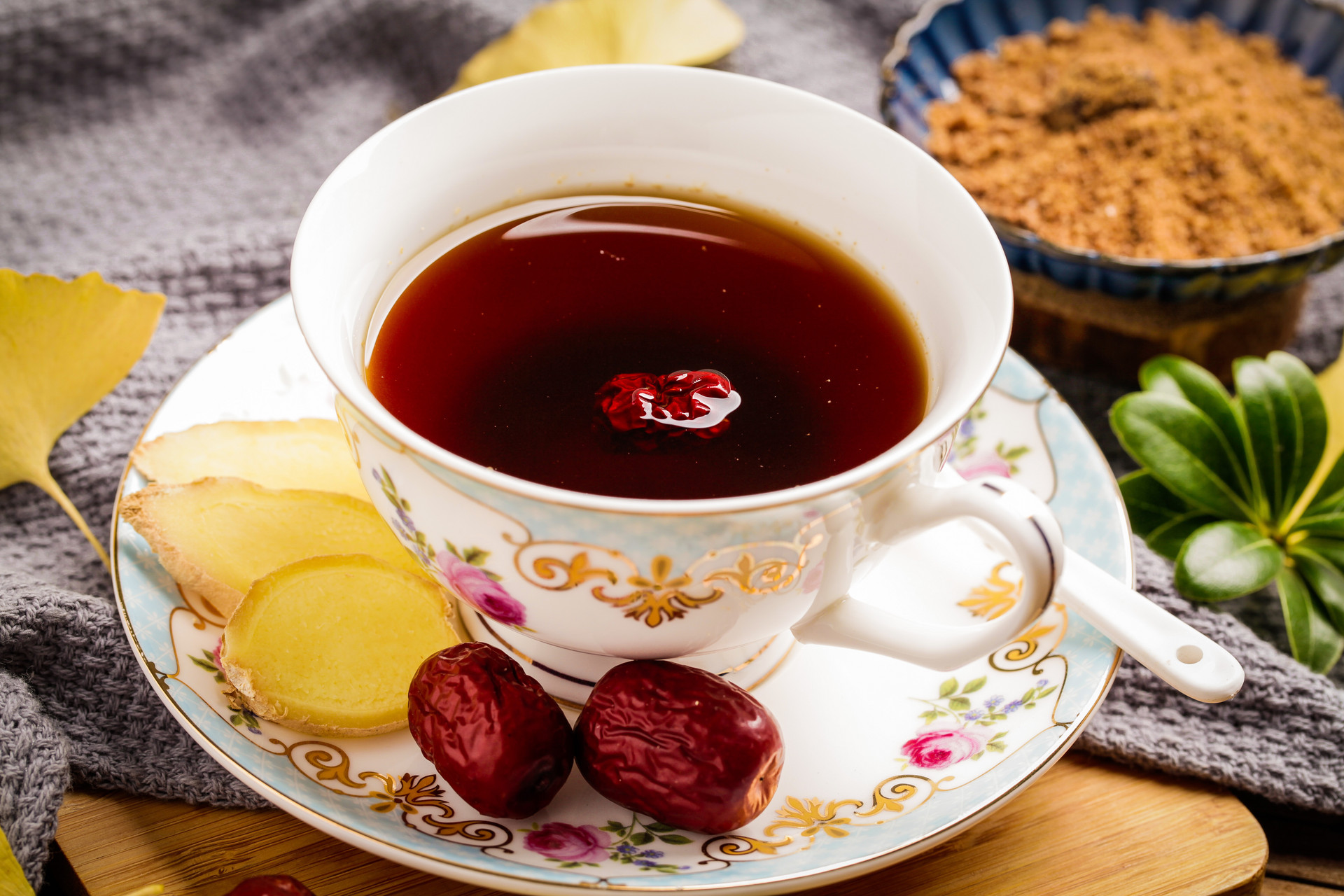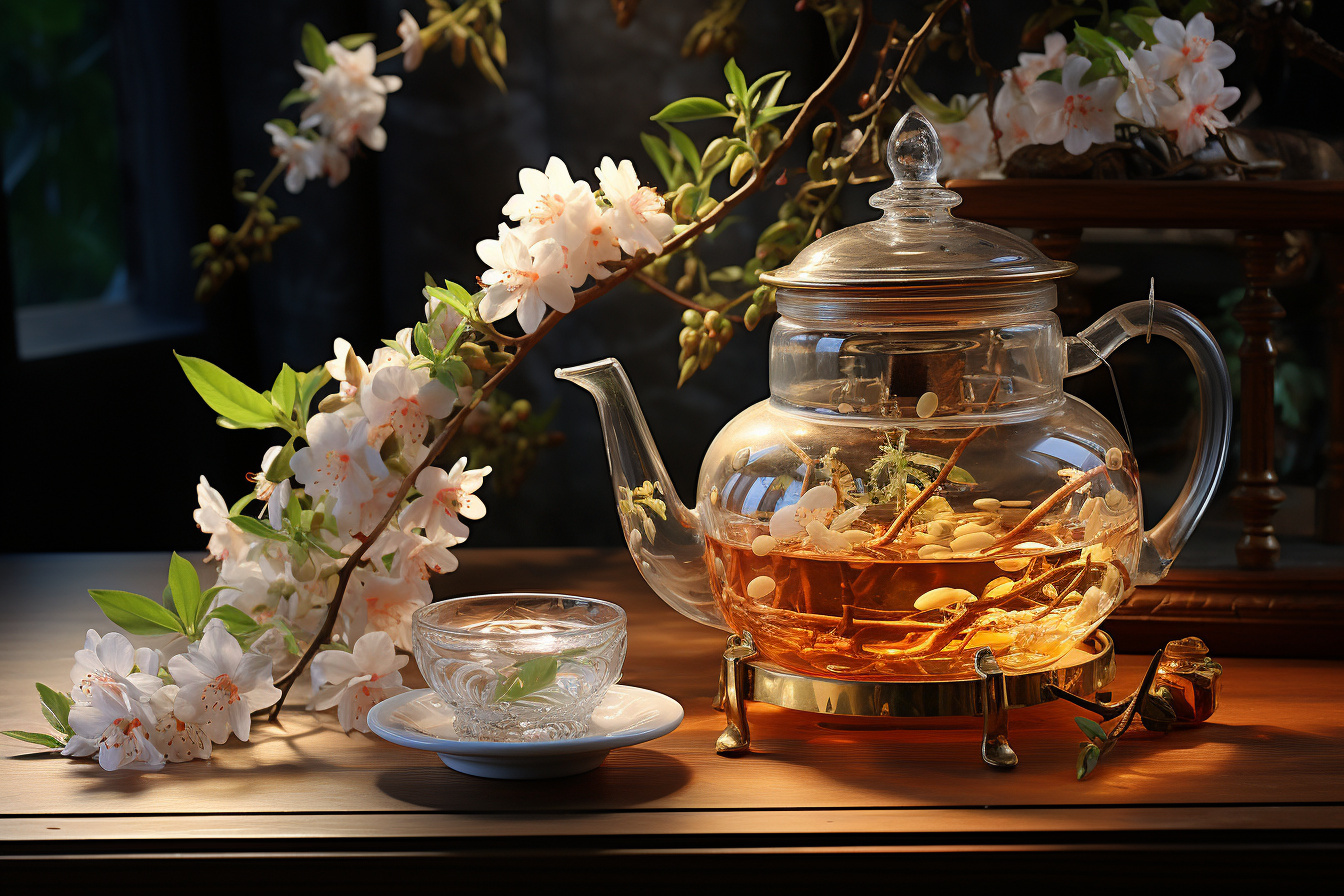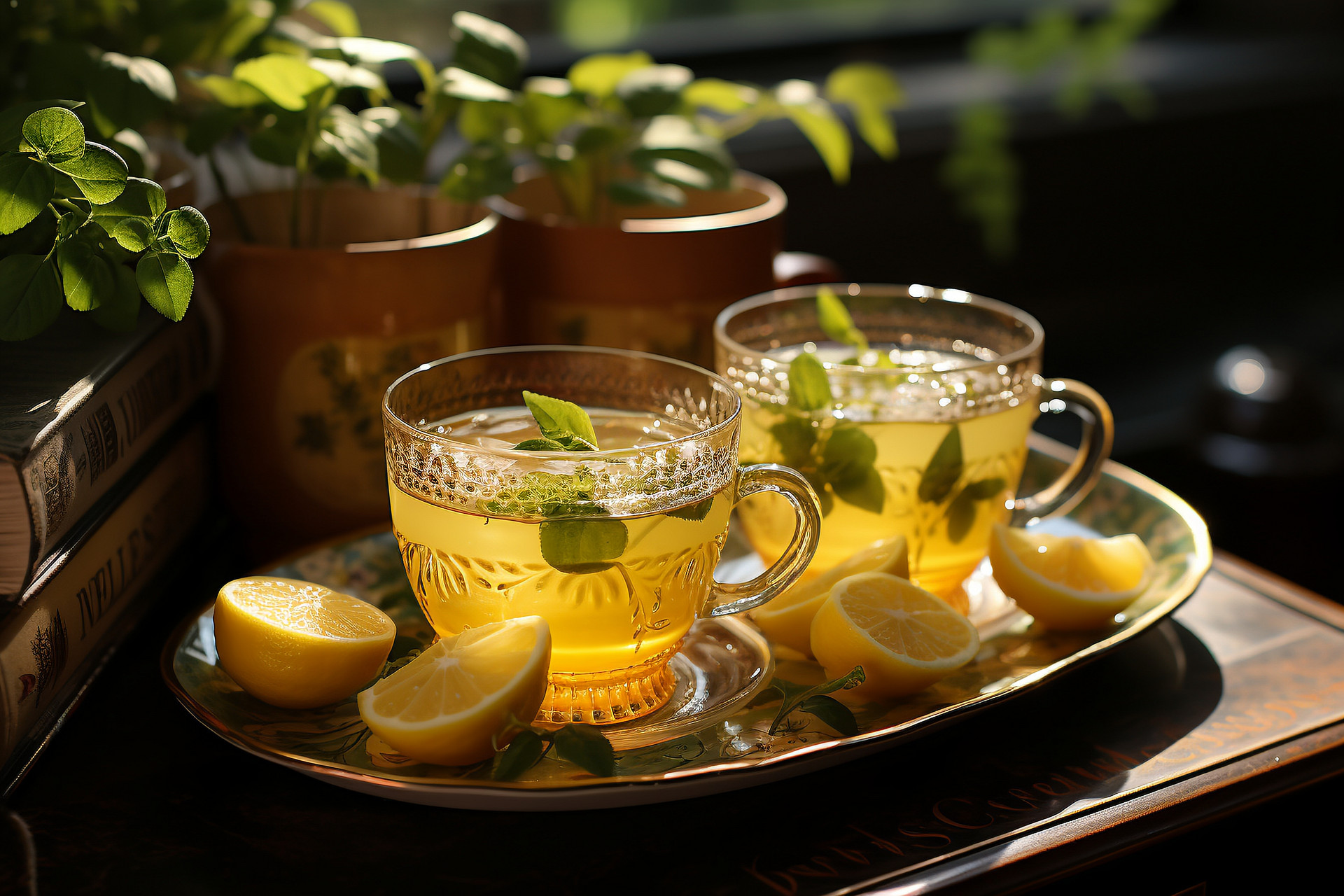Pu'er Tea
Pu'er tea (scientific name: Camellia assamica(Mast.)Chang) is a large evergreen tree that can grow up to 16 meters. The young branches are slightly hairy, and the terminal buds are covered in white down. The leaves are thin and leathery, oval-shaped, brownish green and slightly glossy on the upper surface after drying, light green on the lower surface, and have short hairs on the midrib and other parts. The old leaves become smooth. There are 8-9 pairs of lateral veins that are visible on the upper surface. The flowers are axillary and hairy. There are 2 bracts that fall off early. The sepals are nearly round and hairless on the outside. The petals are oblong and hairless, with 6-7 petals. The stamens are 8-10 mm long, separate, and hairless. The ovary has 3 chambers and is covered in hair; the style is 8 mm long and splits into 3 at the tip. The fruit is a flat triangular sphere. There is 1 seed per chamber, nearly round with a diameter of 1 centimeter.
Pu'er tea is mainly produced in Xishuangbanna, Lincang, and Pu'er areas of Yunnan Province. It emphasizes brewing techniques and the art of tasting. It can be enjoyed on its own or blended with other teas. Pu'er tea has a thick orange-yellow soup, a strong and long-lasting aroma, a unique fragrance, and a rich and mellow taste that can endure multiple infusions.
Produced in Yunnan, Pu'er tea is classified as a fermented tea. According to research, Pu'er tea is most suitable for people who want to reduce fat around their waist because it can enhance the enzymatic breakdown of abdominal fat due to its unique fermentation process. Long-term consumption of Pu'er tea has the function of treating obesity. Drinking Pu'er tea can cause physiological effects such as vasodilation, lowering blood pressure, slowing heart rate, and reducing cerebral blood flow. Therefore, it has a good therapeutic effect on patients with hypertension and cerebral arteriosclerosis.
Leaf Varieties
In terms of production, "Pu'er tea" is divided into two main categories: loose Pu'er tea and compressed Pu'er tea. Traditional loose Pu'er tea includes Maojian and Coarse Leaf, but it has now developed into six categories: green Pu'er tea, raw Pu'er tea, black Pu'er tea, yellow Pu'er tea, white Pu'er tea, and red Pu'er tea.
Compressed Pu'er Tea
The traditional categories include bud tea, daughter tea, cake tea, and brick tea, which have now developed into three categories: Pu'er tuocha tea (including large and small tuocha tea), Pu'er cake tea (including green cake, ripe cake, square cake, round cake, and irregular-shaped cake), and Pu'er tea brick. The production method involves steaming (pan-frying) loose tea, then pressing it into various molds using specific techniques. Compressed Pu'er tea can be further classified into "raw Pu'er" (made by sun-drying and slowly fermenting loose pressed tea) and "ripe Pu'er" (made by accelerated fermentation of sun-dried loose pressed tea at high temperature and high humidity). The taste of raw Pu'er is considered superior.
Green Pu'er Tea
The quality of green Pu'er tea is characterized by clear green soup and leaves. The production process involves withering, rolling, and drying. Withering is mainly done to destroy the acidity in the fresh leaves and facilitate rolling. Rolling is done to tightly roll the tea leaves and appropriately break the leaf tissue, making it easier to brew. The drying methods include stir-frying, baking, and sun-drying. Drying aims to evaporate moisture, compact the tea leaves, release aroma, and enhance color. After refining, green tea can be further processed into Pu'er flower tea, Pu'er tuocha tea, and Pu'er cake tea (green).
Red Pu'er Tea
The production process of red Pu'er tea involves withering, rolling, fermentation, and drying. With the help of withering, the catechins in the tea leaves can fully oxidize during rolling and fermentation, creating unique color, aroma, and taste. High-temperature drying is then used to halt enzymatic activity and fix the qualities of the tea. It can be further divided into small-leaf red tea, broken red tea, and Gongfu red tea based on appearance and quality.
Raw Pu'er Tea
Raw Pu'er tea is a lightly fermented tea. The production process includes withering, shaping, pan-frying, rolling, and drying. The distinguishing feature is the shaping process, in which the tea leaves acquire the characteristic of "green leaves with red edges". It is a semi-fermented tea between green tea and black tea, with a sweet and refreshing taste, a clear soup color, and a refreshing aftertaste.
Yellow Pu'er Tea
The basic process of yellow Pu'er tea is similar to that of green tea. It involves withering, rolling, steaming, and drying. The crucial step is steaming, which is the main characteristic of yellow tea production. By steaming the tea after rolling, the quality of the tea leaves is changed. The quality of yellow tea is characterized by a yellow soup and yellow leaves.
Black Pu'er Tea
Black Pu'er tea is a post-fermented tea. It is made from fresh leaves of "Pu'er tea" with one bud and five or six leaves. The production process includes withering, rolling, pile fermentation, and drying. The key feature is the pile fermentation, which lasts for 24 days after withering and rolling, resulting in dark leaves. The quality of black Pu'er tea is characterized by dark leaves, orange-yellow soup, and is mainly used to make compressed tea (ripe).


![[The Risks of Eating Hawthorn During Pregnancy]](https://tcmmaintenance.com/uploads/20240715/97742b67f97f94c495ae1389337c5c41.jpg)
